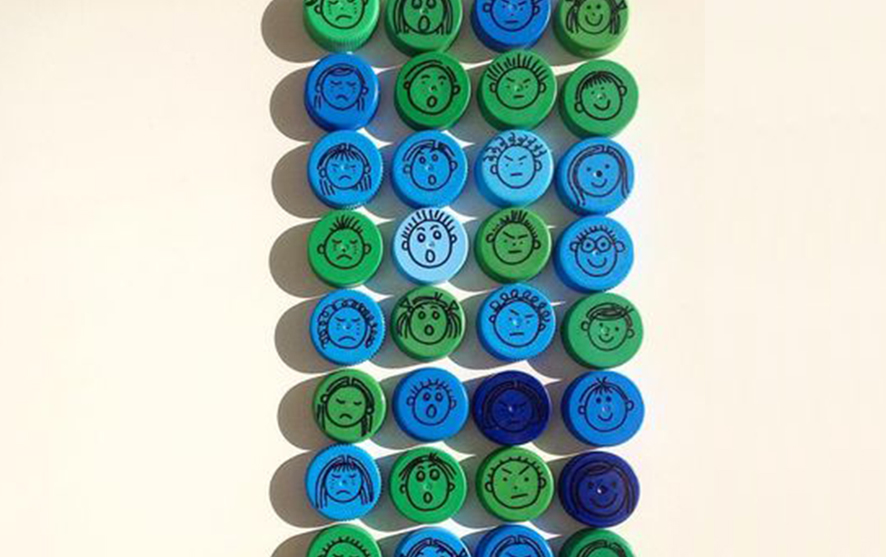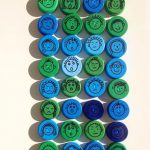Tidying up the garden grass
What you need Child-friendly scissors Some outdoor space - garden, park or grassy area Benefits [...]
Read more

This experience will encourage your child to talk about and label different emotions and feelings. Having a rich vocabulary associated with feelings and an understanding of what they are is an important part of developing emotional self regulation, an essential skill for all children to learn.
Set up a place to chat about and explore your person. Your child may like to help draw the person or add colours of their choice to an outline drawn by you. The person could be them, or a named character you choose together.
You will need to have prepared your bottle tops. Older children may like to help with this and do the drawing, or you may choose to draw the feelings on yourself. On each bottle top you will add the facial features of a different emotion, using a sharpie. For example a sad face with downwards facing mouth and even tears, a smiley happy face, angry, confused or even sleepy face! The older your child is, the more emotions you can add in to extend their vocabulary and understanding further.
Ask your child – ‘how are you feeling today?’ They can select the appropriate feeling and place it onto the face of the person. This can be used as a great tool for your child showing you how they are feeling, or to open up discussion around a particular feeling, e.g. ‘This face looks angry…what makes you feel angry?’
Having regular chats about feelings and emotions helps your child understand what they are and how to handle them when they come, without feeling overwhelmed. It is important children understand that all feelings are normal, and that it’s okay to feel them.